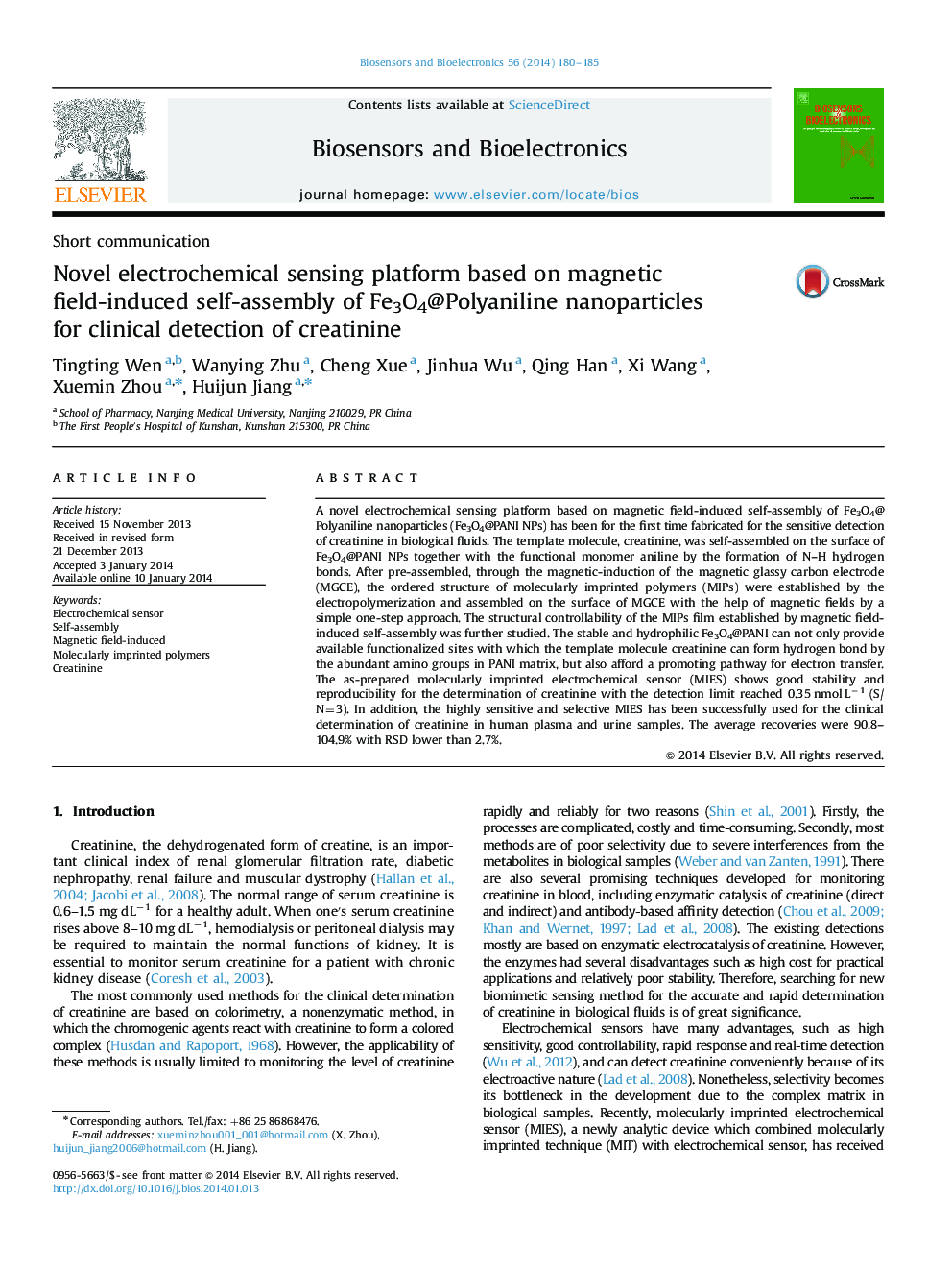| کد مقاله | کد نشریه | سال انتشار | مقاله انگلیسی | نسخه تمام متن |
|---|---|---|---|---|
| 866659 | 1470975 | 2014 | 6 صفحه PDF | دانلود رایگان |

• MIES was prepared based on magnetic field-induced self-assembly by a one-step approach.
• Fe3O4@PANI NPs were oriented and assembled orderly on the surface of MGCE, which enhanced the sensitivity of the electrode.
• The sensor was successfully used for rapid, sensitive and selective determination of creatinine in human plasma and urine samples.
A novel electrochemical sensing platform based on magnetic field-induced self-assembly of Fe3O4@Polyaniline nanoparticles (Fe3O4@PANI NPs) has been for the first time fabricated for the sensitive detection of creatinine in biological fluids. The template molecule, creatinine, was self-assembled on the surface of Fe3O4@PANI NPs together with the functional monomer aniline by the formation of N–H hydrogen bonds. After pre-assembled, through the magnetic-induction of the magnetic glassy carbon electrode (MGCE), the ordered structure of molecularly imprinted polymers (MIPs) were established by the electropolymerization and assembled on the surface of MGCE with the help of magnetic fields by a simple one-step approach. The structural controllability of the MIPs film established by magnetic field-induced self-assembly was further studied. The stable and hydrophilic Fe3O4@PANI can not only provide available functionalized sites with which the template molecule creatinine can form hydrogen bond by the abundant amino groups in PANI matrix, but also afford a promoting pathway for electron transfer. The as-prepared molecularly imprinted electrochemical sensor (MIES) shows good stability and reproducibility for the determination of creatinine with the detection limit reached 0.35 nmol L−1 (S/N=3). In addition, the highly sensitive and selective MIES has been successfully used for the clinical determination of creatinine in human plasma and urine samples. The average recoveries were 90.8–104.9% with RSD lower than 2.7%.
Journal: Biosensors and Bioelectronics - Volume 56, 15 June 2014, Pages 180–185